Buying Guide for the Best 75 Inch Smart Tv
Choosing a 75-inch smart TV is an exciting decision, as it can transform your living room into a home theater. The large screen size is perfect for immersive movie nights, sports, and gaming. However, with so many features and technologies available, it’s important to understand what matters most for your needs. Focusing on the right specifications will help you get the best viewing experience and ensure your TV fits well in your space.Display ResolutionDisplay resolution refers to the number of pixels that make up the picture on the screen. The most common resolutions for large TVs are Full HD (1080p), 4K (Ultra HD), and 8K. Higher resolution means sharper and more detailed images, which is especially noticeable on a big 75-inch screen. For most people, 4K is the sweet spot, offering excellent clarity and wide content availability. 8K is even sharper but currently has limited content. If you mostly watch regular TV or older content, 1080p may suffice, but for streaming, gaming, or future-proofing, 4K is recommended.
Panel TypePanel type determines how the TV displays colors, brightness, and contrast. The main types are LED, QLED, and OLED. LED panels are common and offer good performance for most uses. QLED panels use a special layer to enhance brightness and color, making them great for bright rooms. OLED panels provide the best contrast and deep blacks, ideal for movie lovers and dark rooms. If you want vibrant colors and watch TV in a well-lit room, QLED is a good choice. For cinema-like quality and deep blacks, OLED is best, while LED is a solid all-rounder.
Refresh RateRefresh rate is how many times per second the TV updates its image, measured in Hertz (Hz). Common values are 60Hz and 120Hz. A higher refresh rate means smoother motion, which is important for fast-paced sports, action movies, and gaming. If you mostly watch regular TV shows or movies, 60Hz is usually enough. For sports fans and gamers, 120Hz provides a noticeably smoother experience.
Smart TV PlatformThe smart TV platform is the software that lets you access apps, streaming services, and other features. Popular platforms include Android TV, webOS, Tizen, and Roku. Each has its own app selection, interface, and voice assistant compatibility. If you have a favorite streaming service or smart home system, check that the TV supports it. A user-friendly interface and regular updates can make your experience smoother and more enjoyable.
HDR SupportHDR (High Dynamic Range) enhances the contrast and color range of your TV, making images look more realistic and vibrant. There are different types of HDR, such as HDR10, Dolby Vision, and HLG. The more formats supported, the better your TV can handle various content. If you enjoy movies and streaming, look for a TV with good HDR support to get the most out of modern content.
ConnectivityConnectivity refers to the types and number of ports available, such as HDMI, USB, and audio outputs. More HDMI ports allow you to connect multiple devices like game consoles, soundbars, and streaming boxes. If you have several devices, look for at least three HDMI ports. Also, check for features like eARC for better audio quality and Wi-Fi or Ethernet for stable internet connections.
Viewing Distance and Room SizeA 75-inch TV is quite large, so it’s important to consider your room size and how far you’ll sit from the screen. Sitting too close can make the picture look pixelated, while sitting too far can make it hard to appreciate the detail. For a 75-inch 4K TV, a viewing distance of about 8 to 12 feet is ideal. Measure your space to ensure the TV fits comfortably and provides an immersive experience.
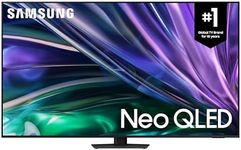
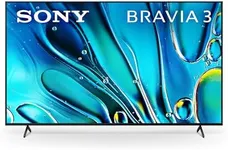
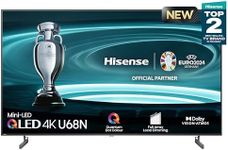


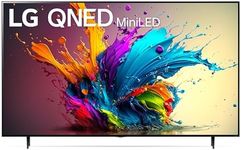

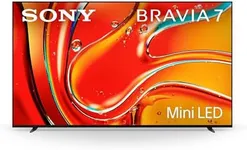
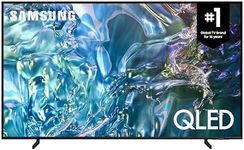

![Samsung 75-Inch Crystal UHD DU7100 Series with Crystal Processor 4K, Object Tracking Sound Lite, Q-Symphony, 4K Upscaling, Gaming Hub, Smart TV - [UN75DU7100FXZC][Canada Version] (2024)](https://images-proxy.bestreviews.guide/QGpklzcXJ0GJ8NJ8BYsfr6tBudI=/0x150/https://m.media-amazon.com/images/I/51RRxZQQsXL._AC_CX679_.jpg)

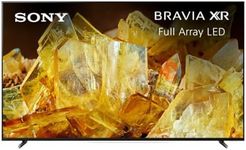
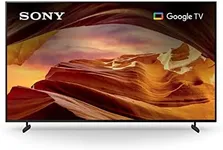
![SAMSUNG 75-Inch Class Neo QLED 4K QN85C Series Neo Quantum HDR, Dolby Atmos, Object Tracking Sound, Motion Xcelerator Turbo+, Gaming Hub, Alexa Built-in - [QN75QN85CAFXZC] [Canada Version] (2023)](https://images-proxy.bestreviews.guide/8YjFOguYadAKfsz02Y8Eyf34McQ=/0x150/https://m.media-amazon.com/images/I/51ibMfkKR5L._AC_CX679_.jpg)

